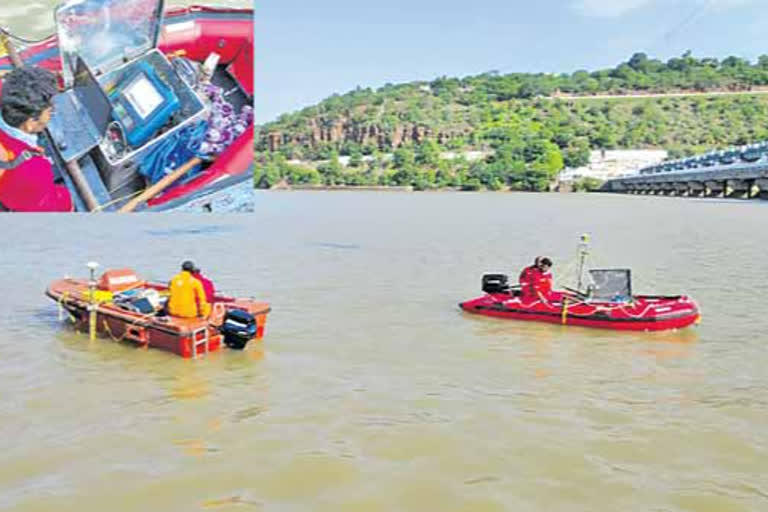Srisailam (Andhra Pradesh): Srisailam reservoir, a lifeline of Telangana and Andhra Pradesh, has been losing 2 to 3 tmc of water storage capacity a year due to heavy accumulation of silt. While its total storage capacity is 308.60 tmc, the actual capacity has fallen to 215.80 tmc. That is a dip of about 92 tmc.
Last year, the central government observed that the sedimentation problem was highly prevalent in reservoirs across the Telugu states. It is estimated that, combined, both the states have lost 50 percent of the total water storage capacity from flooding and consequent plunge pool formation in the reservoirs. In 2009, it was found that the Nagarjuna Sagar reservoir lost 40.73 percent of its storage capacity due to similar reasons. In a 1992 survey, it was revealed that the Nizam Sagar reservoir saw a 60.47 percent drop in its total storage capacity.
Also read:TN CM Stalin rules out scope for parleys with Karnataka on Mekedatu reservoir row
According to a report released by the Ministry of Jal Shakti in August 2020, the combined storage capacity of all the reservoirs in the country is 25,000 crore cubic metres. Work is underway to increase it to 38,000 crore. But the ever-persistent problem of sedimentation is making things difficult. Thirty six reservoirs across South Indian states are facing this issue. As a result, the actual storage capacity got slashed by 39 percent, according to the report.
Due to silt formation, the reservoirs are not holding required water levels for hydropower generation. In addition, reservoir tunnels and walls are getting damaged. Adjacent power turbines are also susceptible to damage. The foundation of the reservoirs could take a beating too. The Rampur power project in Shimla had to be shut down due to the same challenge. Production resumed only after the sedimentation was removed. The Bhakra dam in Punjab, one of the largest in the country, can hold 927 crore cubic metres of water. However, the storage capacity decreased by 213 crore cubic metres due to silting. The Tungabhadra reservoir also has serious silting problem. The Narayanpur and Malaprabha reservoirs in Karnataka have lost their storage capacity due to excessive sedimentation.
Also read:Despite heavy rains, Maharashtra stares at water crisis
Due to deforestation in the Krishna river basin, the eroded soil during floods is ending up in reservoirs. The Srisailam reservoir had received huge amounts of water and mud during the 2009 floods. According to the guidelines of the Central Water Commission, the storage capacity of reservoirs must be assessed every six years. Currently, 12 hydrologists from Mumbai are conducting a survey to assess the extent of storage capacity of the Srisailam reservoir. The hydrographic survey will calculate the maximum water level through remote sensing techniques. Experts say that conventional dredging may not be possible at Srisailam reservoir owing to its placement amid high hills and Nallamala forest. Others claim that the alluvial soil sediment can be used for agriculture post dredging.
All in all, it has been estimated that the lifespan of a reservoir can be increased by 15 to 20 years if the silt in inflowing water can be reduced by 10 percent. DK Sharma, Chairman of the Bhakra Base Management Board, had earlier said that afforestation could keep soil erosion in check. In Japan, smaller reservoirs of about 15 metres height have been set up adjacent to large reservoirs to filter silt from the incoming water. In the wake of water disputes between Telangana and Andhra Pradesh, the Centre is currently engaged in reassessing projects and water allocations. Hydrologists suggest that the Centre should focus on siltation and solve the problem of reservoir drawdown.
